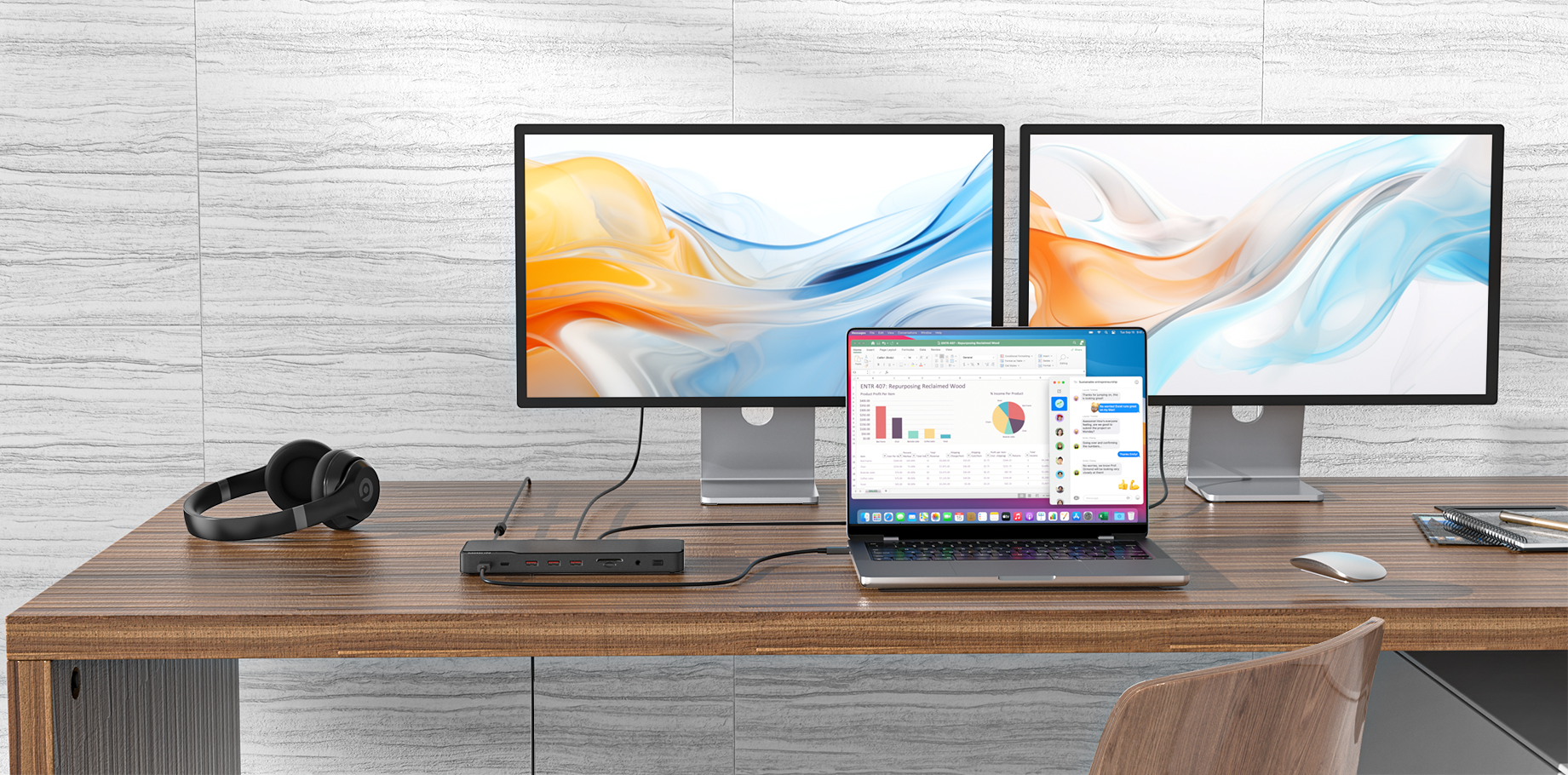Thunderbolt and USB-C are commonly used connector cables that may look similar, but they have significant differences. It's essential to know which one your device supports before making a purchase.
USB-C vs. Thunderbolt: Overall Findings
| USB-C | Thunderbolt |
| ● Faster than traditional USB connections. | ● Faster than USB-C. |
| ● Outputs HD video and audio with adapters. | ● Outputs HD video and video via DisplayPort. |
| ● Widely available on PCs and Macs. | ● Not as widely supported on Windows devices. |
USB and Thunderbolt (not to be confused with Lightning) are protocols for data and video transfer. With the introduction of USB-C, both can now use the same 24-pin oval port. The latest USB protocol, USB 4, is available only via USB-C.
Since Thunderbolt and USB-C look similar, identify Thunderbolt-compatible hardware by looking for the Thunderbolt logo.

Speed: USB-C Is Catching up to Thunderbolt
| USB-C | Thunderbolt |
| ● USB 4 supports speeds up to 40Gbps. | ● Thunderbolt 3 and 4 support speeds up to 40Gbps. |
| ● USB 3 supports speeds up to 10Gbps. | ● Thunderbolt 2 supports speeds up to 20Gbps. |
| ● Power and charge devices at 100 watts. | ● Power and charge devices at 100 watts. |
Transfers via Thunderbolt will generally be faster than USB-C, though the gap between the two is narrowing.
Support: USB-C Is Universally Supported
| USB-C | Thunderbolt |
| ● Available on all new PCs. | ● Available on all Apple computers and some PCs. |
| ● Cheaper to manufacture. | ● Cost increases with each port. |
| ● Not cross-compatible with Thunderbolt (although they use the same ports). | ● Supports USB as a fallback. |
All Macs support both Thunderbolt and USB-C, while most Windows PCs come with USB-C ports, but not all support Thunderbolt due to Intel requiring manufacturers to purchase a license. Thunderbolt requires additional hardware, increasing device costs.
Ports supporting Thunderbolt 3 and 4 also accept USB-C cables, but not all USB-C ports support Thunderbolt. When a Thunderbolt cable is plugged into a USB-C port, it defaults to the USB protocol. On devices with multiple ports, some may only support USB-C, while others support both.
Compatibility: Thunderbolt Is More Versatile
| USB-C | Thunderbolt |
| ● Supports 4K displays with audio using a workaround. | ● Supports up to two 4K video displays or one 8K display. |
| ● USB 4 and USB 3 use the same USB-C port. | ● Thunderbolt 4 and 3 use the same USB-C port. |
| ● Connect to USB 2 devices with an adapter. | ● Connect to older Thunderbolt devices with an adapter. |
USB-C now supports HDMI video output, but only Thunderbolt currently supports DisplayPort. An adapter is required to transfer audio via USB-C, but Thunderbolt natively supports video and audio. However, Thunderbolt requires an adapter for HDMI. Thunderbolt can also support DVI and VGA displays through the use of adapters.
USB-C is backward compatible with USB 2 and later, and Thunderbolt is backward compatible with all other versions of Thunderbolt, although adapters may be required. You can daisy chain up to six Thunderbolt and USB cables to each other, but you can't mix and match.





